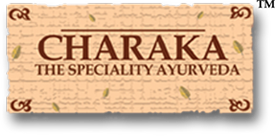
Men and women are equally affected. It occurs most often between ages 30 and 50, due in part to the aging process but also as a result of sedentary life styles with too little (sometimes punctuated by too much) exercise. The risk of experiencing low back pain from disc disease or spinal degeneration increases with age.
Back pain may have a sudden onset or can be a chronic pain; it can be constant or intermittent, stay in one place or radiate to other areas. It may be a dull ache, or a sharp or piercing or burning sensation. The pain may radiate into the legs or feet, and may include symptoms other than pain. These symptoms may include tingling, weakness or numbness.
Acute or short-term low back pain generally lasts from a few days to a few weeks. Most acute back pain is mechanical in nature — the result of trauma to the lower back or a disorder such as arthritis. Pain from trauma may be caused by a sports injury, work around the house or in the garden, or a sudden jolt such as a car accident or other stress on spinal bones and tissues. Symptoms may range from muscle ache to shooting or stabbing pain, limited flexibility and/or range of motion, or an inability to stand straight. Occasionally, pain felt in one part of the body may “radiate” from a disorder or injury elsewhere in the body. Some acute pain syndromes can become more serious if left untreated.
Chronic back pain is measured by duration — pain that persists for more than 3 months is considered chronic. It is often progressive and the cause can be difficult to determine.
Symptoms of back pain may include:
- Muscle ache
- Shooting or stabbing pain
- Pain that radiates down your leg
- Limited flexibility or range of motion of the back
- Inability to stand up straight
Back pain often develops without a specific cause that your doctor can identify with a test or imaging study. Conditions commonly linked to back pain include:
- Muscle or ligament strain – Repeated heavy lifting or a sudden awkward movement may strain back muscles and spinal ligaments. If you’re in poor physical condition, constant strain on your back may cause painful muscle spasms.
- Bulging or ruptured disks – Disks act as cushions between the individual bones (vertebrae) in your spine. Sometimes, the soft material inside a disk may bulge out of place or rupture and press on a nerve. The presence of a bulging or ruptured disk on an X-ray doesn’t automatically equal back pain, though. Disk disease is often found incidentally; many people who don’t have back pain turn out to have bulging or ruptured disks when they undergo spine X-rays for some other reason.
- Spinal degeneration – degenaration from disc wear and tear can lead to a narrowing of the spinal canal. A person with spinal degeneration may experience stiffness in the back upon awakening or may feel pain after walking or standing for a long time.
- Arthritis – Osteoarthritis can affect the lower back. In some cases, arthritis in the spine can lead to a narrowing of the space around the spinal cord, a condition called spinal stenosis.
- Skeletal irregularities – Back pain can occur if your spine curves in an abnormal way. Scoliosis, a condition in which your spine curves to the side, also may lead to back pain, but generally only if the scoliosis is quite severe.
- Osteoporosis – Compression fractures of your spine’s vertebrae can occur if your bones become porous and brittle.
- Fibromyalgia – It is a chronic disorder characterized by widespread musculoskeletal pain, fatigue, and multiple “tender points,” particularly in the neck, spine, shoulders, and hips. Additional symptoms may include sleep disturbances, morning stiffness, and anxiety.
- Spondylitis – refers to chronic back pain and stiffness caused by a severe infection to or inflammation of the spinal joints. Other painful inflammations in the lower back include osteomyelitis (infection in the bones of the spine) and sacroiliitis(inflammation in the sacroiliac joints).
The diagnosis of low back pain involves a review of the history of the illness and underlying medical conditions as well as a physical examination. It is essential that a complete story of the back pain be reviewed including injury history, aggravating and alleviating conditions, associated symptoms (fever, numbness, tingling, incontinence, etc.), as well as the duration and progression of symptoms.
These assessments help determine where the pain comes from, how much you can move before pain forces you to stop and whether you have muscle spasms. They will also help rule out more-serious causes of back pain.
If there is reason to suspect a specific condition may be causing your back pain, we may order one or more tests:
- X-ray – These images show the alignment of your bones and whether you have arthritis or broken bones. X-ray images won’t directly show problems with your spinal cord, muscles, nerves or disks.
- Magnetic resonance imaging (MRI) or computerized tomography (CT) scans – These scans can generate images that may reveal herniated disks or problems with bones, muscles, tissue, tendons, nerves, ligaments and blood vessels.
- Bone scan – In rare cases, your doctor may use a bone scan to look for bone tumors or compression fractures caused by osteoporosis.
- Nerve studies (electromyography, or EMG) – This test measures the electrical impulses produced by the nerves and the responses of your muscles. This test can confirm nerve compression caused by herniated disks or narrowing of your spinal canal (spinal stenosis).
Ayurveda Management of Backpain

Vata, one among the tripod of human living being is said to be superior most in all aspects, for every guna, lakshana, kriya (properties and actions), health benefits and the strongest in its ability to produce diseases and worst mortality.
Diseases related to Vata are innumerable and presentation of it is in the whole body. Even though a large number of symptoms suggest the abnormality of Vata, the cardinal symptom of vitiation of this dosha is ‘pain’ which is known as Shoola in Ayurveda. This pain is universally understood as a marker of the disease and it is the most common symptom that makes a person to seek the physician’s advice.
At CHARAKA, the treatment for Back pain or Kati shoola will be planned according to the presentation of the dosha predominance and underlying cause. Treatment may include Panchakarma therapies for Shodhana, internal medicines, external applications and advise on diet and life style modification.
Therapies like Abyanga sweda, Dhanyamla dhara, Snehapana, Vamana, Podikizhi, Elakizhi, Pizhichil, Vasti, Navarakizhi, Kati vasti, Pichu etc. are done according to the severity and nature of the disease. Therapies may range between 3 – 6 weeks and can expect maximum recovery with in this period. Duration may vary further based on the underlying cause.

